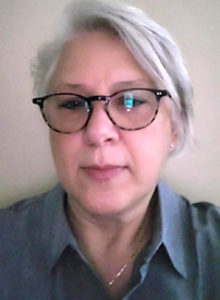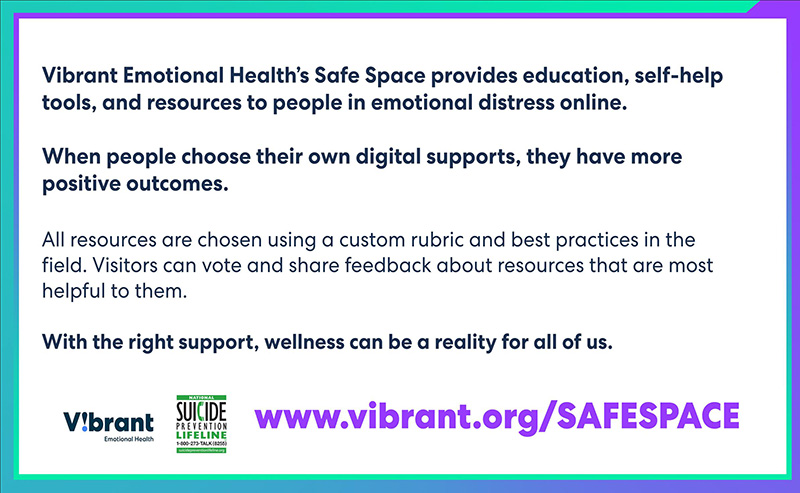After nearly two years of facing COVID-19 waves and realities, healthcare workers are facing unprecedented levels of burnout. Providing important support, resources and space for staff can help prevent this and other acute stress responses from turning into longer term behavioral health challenges.
The COVID-19 pandemic has amplified long-standing staffing concerns within the healthcare industry, affecting every role from physicians to nurses, aides and support staff. While the media have labeled the distress of staff in the healthcare industry broadly as experiencing mental health problems, this is not the core issue. The initial problems in the COVID response centered on the inability to provide critical PPE, staffing, as well as other resources to adequately address the needs of excessive numbers of seriously ill patients in the various settings. This lack of preparing for and immediately responding to the COVID-19 pandemic falls on leadership at all levels. This includes government, business and manufacturing as well as service providers. The lack of preparedness and adequate response to the pandemic coupled with these incompetencies have imposed burnout on healthcare workers who consistently have to stay focused on the health of their patients. And as the pandemic continues, wrought with political and social division, healthcare workers are facing increasing patient distrust, jeopardizing the foundation of the doctor-patient relationship.
Let us be clear. Burnout is not a mental illness. Rather, it is a response to problems with the structure, proper implementation (or lack thereof) of policies and procedures by the organizations, agencies and businesses designated to support the healthcare of our country. Preparedness has not been a priority, but worse not even recognized as a need and this has resulted in the unacceptable situation our healthcare workers are facing today.
This does not invalidate the fact that our healthcare workers are suffering from severe stress, exhaustion, and grief, as well as the fear and anxiety that COVID has brought to all of us. But healthcare workers experience high levels of work stress, exposure to gruesome situations, and the discomfort of working in personal protective equipment. They have managed interpersonal violence, firearms injuries, stabbings, mass violence and other epidemics from Ebola to AIDS. And with the right support, we can help them to move through this pandemic without burning them out or losing them in the profession altogether.
The Reality
Healthcare leaders will continue to be under the stress of limited resources, staffing concerns, patient mistrust and difficulty managing the numbers of seriously ill patients as a result of the COVID pandemic. These long-standing problems are not solved easily or without a significant amount of political and social will. Thus, we can expect a continuation of extreme stressors imposed on our healthcare workers. Actions to support them need to be implemented now.
Additionally, whereas previous disasters and viral epidemics have been short-lived, a pandemic, and in this case, as we see multiple COVID variants developing, we are experiencing a level of chronicity not seen in our lifetime. Thus, typically acute distress – responses that would normally resolve over a reasonable period of time (approximately 30-90 days) – stress, fear, anxiety and grief, remain constant (CMHS 2001; Norris et al. 2002; Myers and Wee 2005). Healthcare workers not only bear the weight of caring for their patients, but also have concerns for themselves, their family members and other loved ones as COVID ravages the globe. Grief suffered from the loss of patients, loved ones and our communities as a whole, is painful and exhausting. It can last for extended periods of time and may become a complex problem if we are unable to allow ourselves the time needed to experience and express it through ritual and connection to others.
At the Physicians Support Line, a 24/7 peer support line for doctors, manned by psychiatrists, reports of compassion fatigue and despair have been a recurring theme in the calls. What started off at the beginning of the pandemic to be a joint mission between doctors and patients to partner together in preventing infection and staying safe, has slowly deteriorated where now doctors feel very much that they are not only alone in fighting this pandemic, but that they are being blamed for any bad outcomes. Their patients don’t trust their advice or their treatment plans. And, patients accuse doctors of not giving them the medication they demand, even though it is not evidence based. Doctors find it very difficult to have empathy for people who do not have empathy in return. There is no meaning and purpose in the work when there is a breakdown of the doctor-patient relationship (NCPTSD, 20160). This is one of the more serious problems that can lead to physicians leaving the profession.
Furthermore, there is ongoing stigma within medicine for seeking mental health care (Wang et al. 2007; CMHS 2001). Currently, several state medical licensing applications ask physicians to disclose their mental health, especially if they had sought treatment for it. There is so much time, energy and financial investment that goes into becoming a physician that it feels the stakes are too high to risk losing it all because of mental health. This perpetuates the false narrative that doctors are well and well-adjusted and sends the message to other physicians that if they are struggling, then it must be an individual problem rather than a systemic one.
Chronic stress in professionals who are helpers or caregivers need proactive support to impose self-care and create space for proper wellness practice and support. This becomes the task of the healthcare leaders. It is up to them to establish the structure and implement policies so that self-care, wellness and emotional care are integrated into all aspects of the workplace. When leadership models and supports wellness by providing education and training, as well as the structure and tools that allow workers to take care of themselves, the likelihood of achieving wellness successfully is much higher.
Interventions that Make a Difference
As mentioned earlier, leadership must support the efforts to ensure staff wellness, most especially at times of extreme distress, but ideally on a routine basis. And again, modeling this sends the message that not only is wellness encouraged, but that everyone is expected to participate equally. Interventions can range from very simple activities such as providing water coolers and healthy snacks to more extensive efforts like engaging EAP programs in full-scale wellness offerings continuously throughout the year. When leadership can be seen taking a walk, using a meditation room, participating in a short stretching session, and sitting in the cafeteria talking to others during lunch breaks, staff are essentially given permission to do the same.
Feedback from staff satisfaction surveys consistently indicate that everyone wants to be acknowledged. “Management by walking around,” a model of support developed several decades ago still holds as an effective means of supporting staff. When leadership takes the time to get to know their staff and the work they do, acknowledging their efforts as well as listening to the concerns that staff verbalize, and then respond by prioritizing staff’s needs, they can influence an increase staff satisfaction and a decrease in burnout.
Engaging healthcare EAP and in house wellness programs to provide self-care education and training activities that can be implemented in the workplace (breathing, stretching, walking, yoga, hydration, music, mindfulness, use of quiet rooms for guided imagery, meditation and prayer) in addition to social events like team challenges, environmental decorations, art and imagery, food preparation/sharing are ways leadership can set the stage. These events can help lead the way towards employee and workplace wellness, even in the midst of a pandemic.
Conclusion
Healthcare workers across the varied sectors of the industry are some of the hardiest, grittiest workers our country knows. They more than rise to meet the needs of patients and family members even as they expect crowded waiting rooms, commonly abusive foul mouthed or foul-smelling patients, many of whom act out their drunkenness or substance abusing disinhibitions, exposure to human caused violence, staff shortages and long shifts, less than adequate pay, minimal to no COLA raises, and some experiences we cannot imagine. Can we at least take the responsibility of setting a culture of self-care within the structure of the workplace that highlights our appreciation for these essential, hard workers? They are our mothers and fathers, our wives and husbands, partners and children, our siblings and cousins, our neighbors and colleagues – whom we would – quite literally – not survive without, should burnout overtake them.
About the Authors
Dr. Naturale is a traumatic stress specialist with a 35-year history as a health/mental health care administrator and clinician specializing in responses to traumatic events. After 9/11/01, Dr. Naturale led Project Liberty, the NY mental health response to the World Trade Center disaster and over the past 20 years Dr. Naturale has provided disaster and traumatic stress response training and consultation throughout the U.S. and internationally. Dr. Naturale served as the U.S. Substance Abuse and Mental Health Services Administration Disaster Technical Assistance Center Project Director, led one of the World Trade Center Health Program’s outreach and education programs and she was the architect of the Boston Marathon bombing behavioral health response.
In 2004, she helped launch the National Suicide Prevention Lifeline, in 2008, an international not for profit called Psychology Beyond Borders and in 2011, the Disaster Distress Helpline. She then worked with the Dept of Justice/Office for Victims of crime as a program and needs assessment consultant for the San Bernardino terror attack, the Las Vegas Harvest Festival, Pulse Nightclub, Parkland, Thousand Oaks, Pittsburgh Tree of Life, Virginia Beach, El Paso and Highland Ranch shooting incidents and the TN Christmas Day bombing. She has trained Psychologists in the Ukraine Military Service, Humanitarian Aid workers for the European Union and recently helped launch the new European Centre of Expertise for Victims of Terrorism.
Currently, Dr. Naturale is the Assistant Vice President of National Programs for Vibrant Emotional Health, where she oversees the Veterans Crisis Line, the National Disaster Distress Helpline and the Crisis Emotional Care Team and the Lifeline Cares Team – a wellness program dedicated to supporting the call center staff who respond to the National Suicide Prevention Lifeline calls. She continues to provide training and support to humanitarian aid workers across the globe. Her dissertation focused on Secondary Traumatic Stress in disaster responders, a subject she continues to study.
Board Certified in general adult psychiatry, Dr. Mona Masood is an outpatient psychiatrist in the greater Philadelphia area and a Board Member of a non-profit community mental health organization, Muslim Wellness Foundation, which provides mental health educational services to the community. Dr. Masood is the Founder and Chief Organizer of the Physician Support Line.
Amy Carol Dominguez serves as the Program Director for the Crisis Emotional Care Team at Vibrant. She has been working Disaster Mental Health since 2007. Amy’s career has taken her around the world to countries like Ethiopia, Liberia, Colombia, Argentina, Canada, and Mexico. Amy has coordinated international disaster mental health responses in Haiti, Nepal, Puerto Rico and across the United States as Managing Director of Disaster Psychiatry Outreach. She holds her Masters in Public Affairs from Indiana University and splits her time between Mexico and Connecticut with her husband, Adiel and daughter, Sofia.
References
Center for Mental Health Services. (2001). Emergency mental health and traumatic stress: An overview of the Crisis Counseling Assistance and Training Program. Retrieved June 11, 2004, from http://www.mentalhealth.samhsa.gov/cmhs/Emergency Services/ ccp_pg01.a
Myers, D., & Wee, D. (2005). Disaster mental health services: a primer for practitioners. New York: Routledge Psychosocial Stress Series.
National Center for Post Traumatic Stress Disorder (NCPTSD). (2016). Disasters and Terrorism. https://www.ptsd.va.gov/professional/trauma/disaster-terrorism/index.asp.
Norris, F. H., Friedman, M. J., & Watson, P. J. (2002). 60,000 disaster victims speak: Part II. Summary and implications of the disaster mental health research. Psychiatry: Interpersonal and Biological Processes, 65(3), 240–260.
Wang, P. S., Gruber, M. J., Powers, R. E., Schoenbaum, M., Speier, A. H., Wells, K. B., et al. (2007). Mental health service use among Hurricane Katrina survivors in the eight months after the disaster. Psychiatric Services, 58, 1403–1411.











Thank you for bringing this issue front and center!